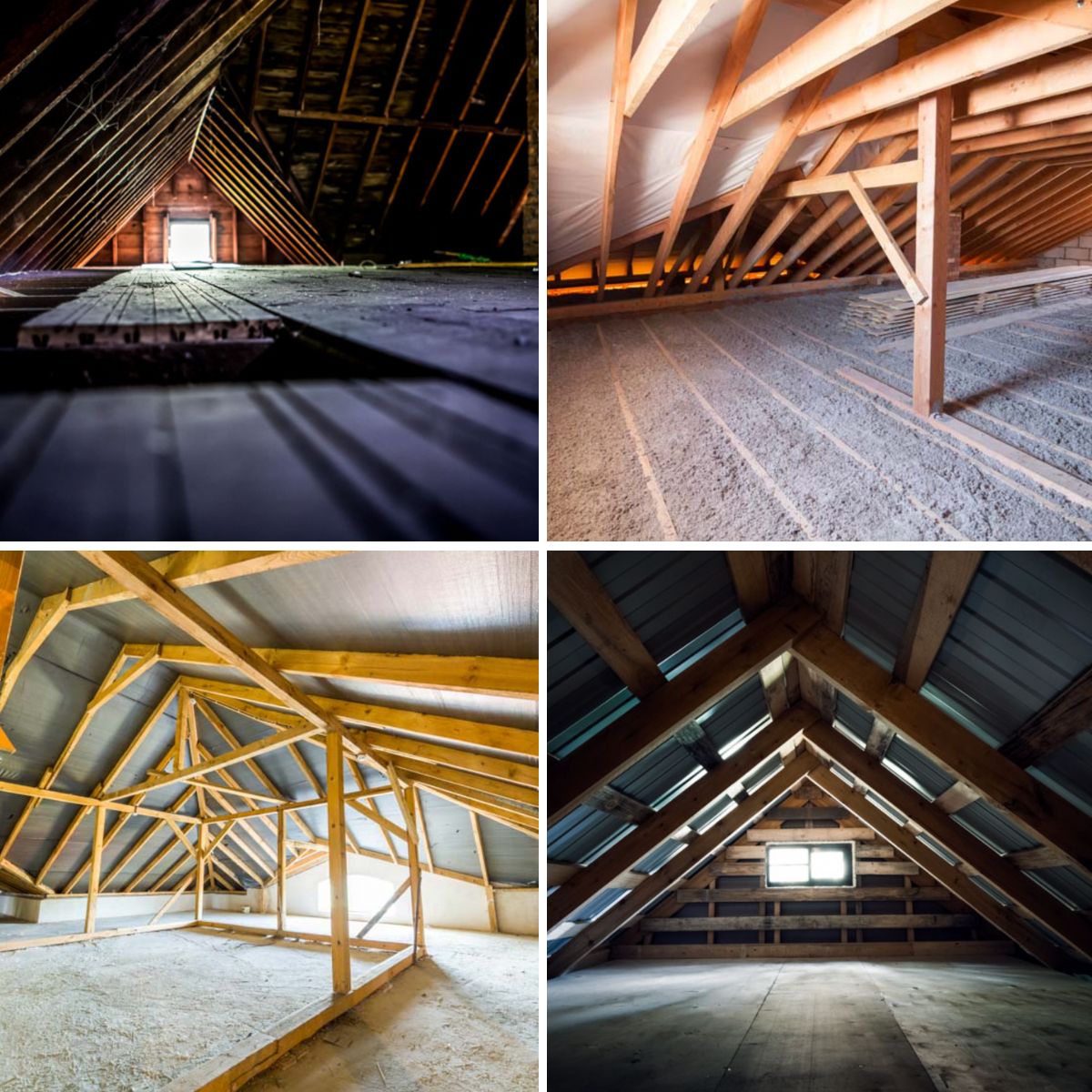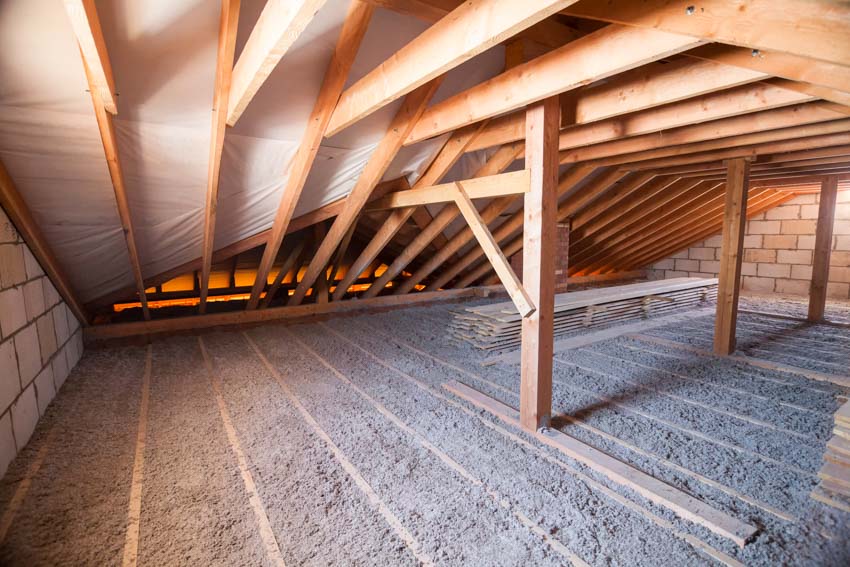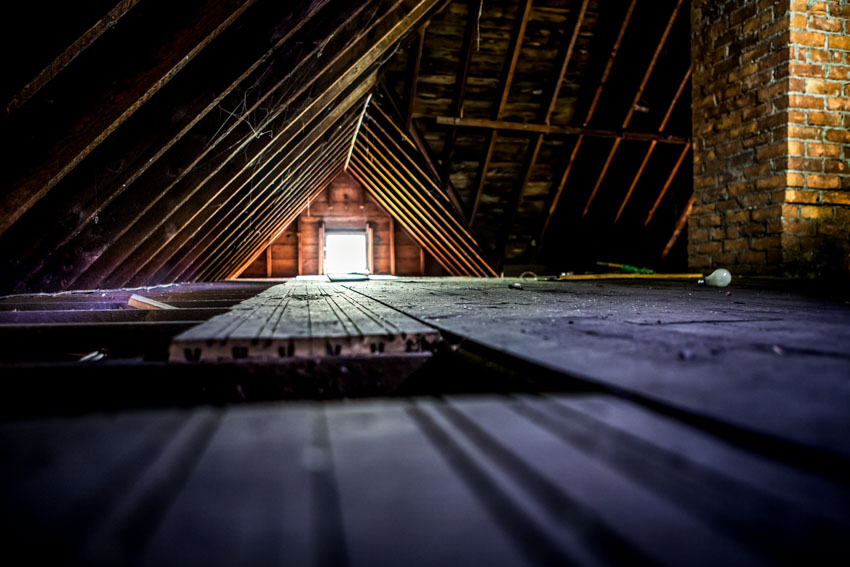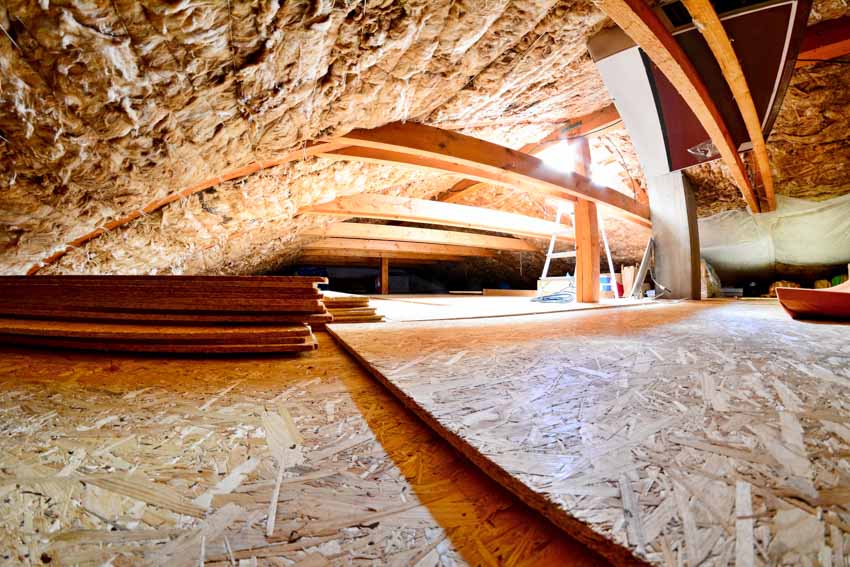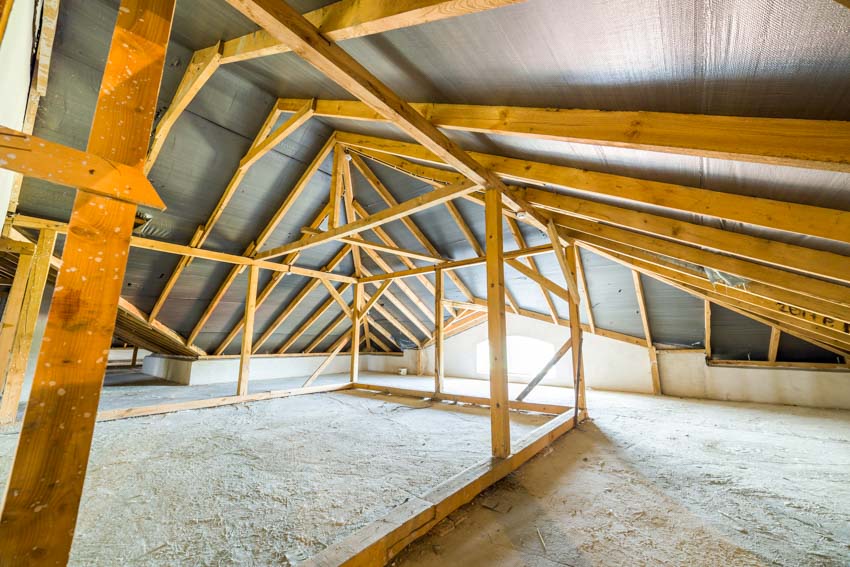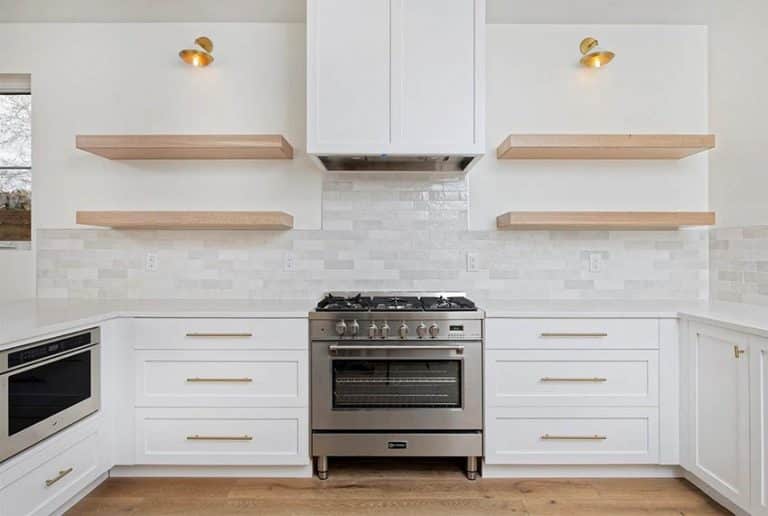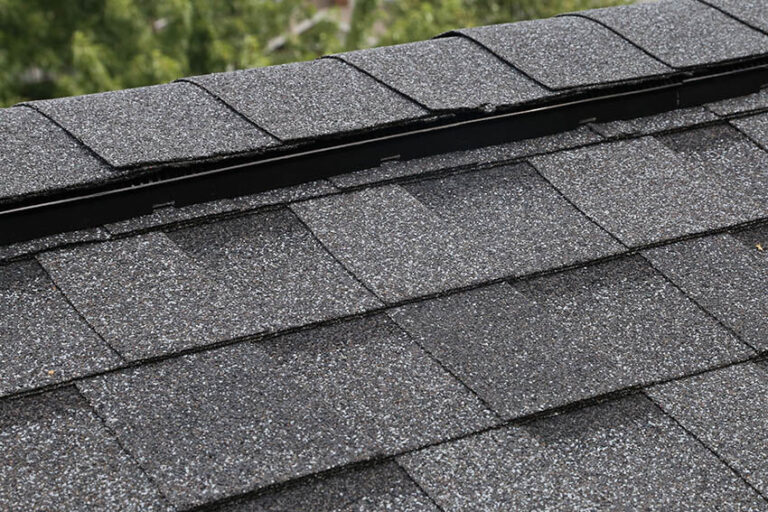Attic Crawl Space (Problems & Maintenance)
When it comes to home construction, very little thought is given to attic crawl spaces. This is an area that is oftentimes forgotten about. It isn’t uncommon to see attic crawl spaces that have accumulated cobwebs, dust, and maybe even tattered insulation over the years. You would want to make sure that you don’t neglect it too much though. Here’s anything and everything that you need to know when it comes to maintaining an attic crawl space in your home.
What Is an Attic Crawl Space?
An attic crawl space is as the name suggests, a small access space in your attic. It sits directly in between your roof and beams that support your main home’s ceiling framework. It isn’t tall enough to be used as a suitable living space and more often than not, is usually left jagged or unfinished.
Since there are so many types of attics they can come in all kinds of shapes and sizes. For the most part, they are awkwardly outlined. Attic crawl spaces are some of the most difficult parts of the home to gain access to or convert into anything usable or functional.
Most houses and many other structures are constructed with an attic or attic crawl space between the roof and the ceiling of the top floor. – Audel HVAC Fundamentals Volume 1, James E. Brumbaugh
Attic crawl spaces can at times be used as extra storage space. This is usually where seasonal décor and other bits and pieces that homeowners don’t want to visibly keep in their homes are stored. This is also oftentimes the permanent home of stuff you don’t really use regularly in and around the house.
Depending on the kind of attic crawl space you actually have, it may hold some potential as an extra guest room, man cave, den, kids’ playroom, or even office. It all depends on the amount of space you have up there and whether or not it can be finished and furnished enough for it to be suitable for actual daily use.
Potential Garret Problems
Although barely used, you have to go out of your way in making sure that you don’t neglect your attic crawl spaces at home too much. If left neglected for prolonged periods of time, it can potentially cause a lot of problems – even health-related ones.
If you haven’t been inside your attic crawl space for quite some time now, you may want to take it slow and have a look around at first. Leaving it alone too much might cost you some expensive consequences that could’ve been otherwise easily avoidable.
Attic crawl space problems can affect your home in a lot of different ways. It can be anything from jeopardizing the structural integrity of your home, to a huge decline in your home’s healthy air quality, or even to a combination of both and so much more.
Here are some of the most common attic crawl space problems you need to pay attention to.
Moisture & Leaks: Moisture and leaks are usually precursors for the more damaging mold growth and infestation but moisture in itself can end up damaging your attic crawl space as well. One common scenario is in your rafter beams.
Excess moisture and leaks can end up building up on your rafter beams and as it accumulates, it can settle on the wood and seep right inside it. Wood is a fairly porous material, which makes it very susceptible or prone to moisture damage.
Depending on how old your rafter beams actually are and how much moisture seeps through them, the wood eventually shows signs of peeling and chipping. In worse cases, you might even see signs of bowing and warping in the beams.
The worst problem you can get from moisture and leaks in your attic crawl space would have to be wood rot. This can eat up on the wood beams of your home and risk its structural integrity. If left unchecked, you could easily end up paying large amounts of money to get entire beams replaced and initiate major renovations so that you can rebuild certain parts of your attic crawl space.
Mold: Your attic crawl spaces are close to your roof. This means that a leak that has gone unnoticed or undetected could eventually lead to an accumulation of moisture or condensation from the inside of your home.
When this happens, this creates an environment that’s dark and damp. This is the perfect formula for mold to grow and thrive in. this can lead to serious health repercussions if left unchecked.
Mold is a serious issue since it has spores that can emit allergens. This can lead to dangerous respiratory problems for the inhabitants of your home as well as lead to eventual structural damage to your home’s main framework.
The organisms that come from mold can grow in your attic crawl space and consume the only organic food that’s available in that environment: wood. It can slowly creep up and degrade the wood and they can thrive if left unchecked for prolonged periods of time.
The worst cases would be that you will end up having to deal with black mold in your crawl space. Black mold can cause sneezing and chronic coughing to those who inhale it. It can irritate the mucus membranes in your nose and throat, irritate your eyes, cause you to break out in rashes, and cause headaches and chronic fatigue that can ultimately lead to black mold poisoning.
Rodents & Pests: Your attic crawl space is also a haven for rats and mice. This is an area in the home that’s quite dark and secluded. It makes it very safe and ideal for rodents and other pests to call it home.
This is one of the main reasons why you really need to maintain your attic crawl space accordingly. It’s very common to discover large colonies of rats and mice resting inside your attic crawl space.
Even worse, these colonies could lead to a full-blown infestation. Once you have one, it can really damage your attic crawl space as well as the one right under your home.
Rats and mice are extremely destructive as they can easily chew through your attic insulation, through wires, and pretty much anything and everything that they will be able to sink their teeth into. On top of all this, there are the feces that needs to be dealt with. Any contact with rodent feces could lead to bacterial infections and serious allergic reactions.
When you do find nests in your attic crawl space, you will need to act right away. Allowing them to live and thrive in this area in your home will not only damage your home but cause serious health problems for you and your family.
How to Get Squirrels out of This Space
Squirrels are annoying and unruly tenants to have in your attic crawl space. If you want to properly maintain it, keeping them away is key. Here are some ways for you to get squirrels out of your crawl space.
Squirrel boxes: Squirrels are unwelcome guests in your attic crawl space. If you want to get rid of them, you need to make sure that you get to give them options. Give them another home to move to so that you can properly facilitate the eviction process.
Every squirrel can have multiple homes or nests especially if a tree it has been residing in has been recently cut down or removed. This leaves it with no other option but to seek out spaces where it will be able to keep itself safe and warm.
This could mean entering your home and eventually, your attic crawl spaces. One solution to this is adding squirrel boxes to your fence lines or in nearby trees or any other area of significant height or off of the ground. This may encourage them to leave your attic space.
Fox scent: Fox scent is another popular solution to driving squirrels out of attic crawl spaces. This is usually sprayed along the ridge lines of the roofs and along the gutters, where squirrels are oftentimes spotted traveling to and fro. Since foxes are natural predators, it makes sense why their scent would drive the squirrels away; protecting your attic crawl space in the process.
Do not attempt to trap and poison squirrels: Baited traps are ineffective because they can leave behind the smell of food. Yes, you’ll be able to capture and poison the first few squirrels but another one may take its place in your attic and it will go on and on in a vicious cycle.
This can also have harmful effects on the ecosystem. Squirrels are territorial and they mark their areas with feces and urine. This can attract other squirrels in the area and invite them to make a nest in your crawl space.
How to Maintain This Attic Space
Now that you understand what the dangers are of a neglected attic crawl space, your next step is probably to come up with a solution on how to maintain the area. With the right kind of planning and with the proper tools in tow, you will be able to keep your attic crawl space clean and safe, and well maintained for prolonged periods of time.
Here are some ways to maintain an attic crawl space:
Clean The Attic Crawl Space: Be honest, when was the last time you actually went up there to clean it out? Periodically removing dirt, debris, and other rotted materials from your attic crawl space can make a huge difference in keeping your house clean and safe. For starters, you’ll get to sweep out any dead bugs in the space. Remember, rodent feces and other pests will also be cleaned out.
Another thing to pay attention to is the vents. They should be kept in top condition, cleaned periodically, and fixed accordingly should there be any issues.
If the vents are not maintained, this can lead to moisture passing through it. It is also recommended for you to put a vapor barrier in the crawl space so that you can protect it from further damage.
Soda blasting: This cleaning method is something that is fairly similar to sandblasting, only gentler and much cleaner. How it works is that air pressure is used to blow any loose particles up from the surface to get them cleaned up. This is a far better way to clean it as opposed to scrubbing it down with soap and bleach.
Add A Mold Resistant Sealer: Mold is a major issue when it comes to attic crawl space maintenance. If you are dealing with mold or if you are worried about the thought of getting mold in the space, a mold-resistant sealer coat can really help you out with that.
This type of sealer is typically clear. It can adhere to so many surfaces from painted surfaces, to wood, to metal, or even to masonry surfaces. Having a coat of sealer will give you one less thing to worry about at the end of the day.
Install Attic Crawl Space Insulation: Another extra layer of protection is using mold-resistant insulation in your attic crawl space. Try to go with something waterproof such as ridge board, or spray foam insulation.
Take note that properly finishing your attic crawl space is also a great way to increase your home’s real estate value overall. You will need the right type of insulation in order for your attic crawl space to be in top condition, free from moisture and leaks and the damage that they bring along with them. Here are a few of the benefits you can get out of insulating your attic crawl space:
• You get to prevent rot and mold: Moisture can get in through the ceiling and even through the cracks in the wall. This can then lead to mold, rot, and other similar problems or even more.
Insulating it will give you an extra layer of protection because it wouldn’t allow the water to get in. Even if you don’t happen to spot any leaks, you should still go out of your way to invest in the insulation of your attic at the end of the day.
• Insulation can keep pests away: It effectively blocks the holes where mice, pests, insects, and rats might end up entering your home. Although it isn’t absolutely impervious, it is still a pretty good deterrent.
Better air quality. Dust and dirt may also enter your home and build up in your attic crawl space. This can degrade the air quality in your home and affect the air that you breathe. Adding insulation can keep these harmful particles out, ensuring that you get to breathe more easily.
• Install A Water Vapor Liner: Adding a high-quality water vapor liner is another way for you to prevent moisture in your attic crawl space. The recommendation is that the vapor liner should be extended all the way up to the wall, preferably at around 6 to 12 inches high up from the crawl space floor.
This water vapor liner needs to be permanently attached and sealed to the walls of your attic for optimum efficiency. Water vapor liners should be at least 6 millimeters thick. It should also effectively and properly cover the entire area, hence, the creation of a moisture barrier. You also need to make sure that you have plastic sheeting underneath your water vapor liner for added security.
Have Proper Crawl Space Ventilation: Homeowners oftentimes underestimate the importance of a well-ventilated attic crawl space. Ventilating it properly has far-reaching benefits. It can deter the growth of molds, fungi, mildews, and alongside it, other pests that tend to thrive in moist and dank conditions.
Moisture usually accumulates in the crawl space when water vapor is trapped in the insulation. The solution to this is to ensure that you have proper crawl space ventilation. According to the IRC, the openings in your home’s corners should be at a range size of around one square foot or so. Here are some of the materials that make for efficient airflow in your ventilation system in the attic:
• Sheet metal plates that have 0.070-inch thick holes
• Ventilation made out of metal grating or cast iron grill
• Wire mesh that’s corrosion resistant with a size of 1/8-inch in thickness
Although the airflow is limited, it is enough to eliminate any instances of humidity in your attic crawl space, making it more breathable and preventing moisture from accumulating in the area.
Attic Cleaning Cost
Cleaning up your attic crawl space area doesn’t cost as much as getting it repaired completely. So this means that it definitely is an investment that is well worth the cost.
Typically, it can cost you anywhere from a range of $500 to $4,000 to get it cleaned up. It all depends on how large the crawl space area is and how much debris is actually on there.
Cleaning takes so much more than just getting the area clean though. On top of this, you get to enjoy the added benefits of warmer floors indoors, cleaner air, and ultimately, bigger savings on your energy costs. It all depends on the complexity of the job.
If there are any repairs that need to be made, it can cost so much more than that, at times costing up to $15,000 or so. Another factor to consider is the cost of special labor in the area that you’re in. The majority of the cost that contractors charge is mostly based on the amount of debris that they need to clear and dispose of.
If your attic crawl space is particularly difficult to get into or access, you can expect an additional fee of anywhere from $100 to $500 on top of the initial quote. If you have toxic wastes such as black mold and other hazardous materials that might put the labor at risk and make the job more complex, it can easily drive the price up as well.
A more cost-effective angle in getting your crawl space cleaned out is to opt to do this yourself. Before you do so, make sure that there isn’t anything toxic up there that might put you at risk.
Once you’ve deemed the area safe, you can just get some garbage bags for debris disposal, some gloves and protective goggles, cleaning tools, and some heavy-duty cleaning solutions to get the job done.
This is applicable only if you have nothing more than general debris in your crawl space and it won’t cost you any more than $50 or so for the supplies.
What Can You Do with Attic Space?
With a little bit of creativity and planning, there are actually a lot of things you can do with your attic crawl area. You can use it for short or long-term storage. You can use it as a space where you organize family heirlooms or other things that you would like to collect and keep safe.
There are so many other things and items you can stack on there that will make your overall home life easier.
Start off by making sure that you make it accessible: It’s usually a smart idea to invest in a high-quality garret ladder that will allow you to do just that. Some ladders are attached to access doors that fold and unfold depending on when you need to use them. You can usually add or remove steps depending on how much height you will need for your area.
Make use of storage bins: Clear plastic bins are great for keeping your garret crawl area organized. They will allow you to see inside which means that finding items that you happen to be looking for at any given time will turn out to be a breeze. Make sure that the lids are secured so that your stored items don’t get dirty or dusty from their stay in the garret.
Vacuum seal the clothes you store in the attic crawl space: Seasonal clothing such as coats and parks can be very bulky and they can eat up a lot of your storage area. Vacuum sealing them will remove the air from the plastic bags and compress the clothes, making them more compact and easier to store.
Get an attic fan installed: How these fans work is that they push hot air out and pull cool air in. This can help keep your garret cooler and help you maintain a better temperature. This is also great for protecting the items you store in your crawl area. Certain types of attic fans are solar-powered so they don’t even need electricity to run.
Get some peg boards installed: This is a really nifty and inexpensive idea for your garret crawl space. You will be able to keep tools and other smaller items organized with nothing more than some hooks attached to the evenly punched-out holes in the board.
Attic Crawl Space Vs Crawl Spaces
Crawl spaces, by definition, are areas in the home that can double over as storage area. But in reality, their main purpose is to provide some sort of barrier between the ground below the home and your actual home. They’re kind of a buffer of sorts.
An attic crawl space, on the other hand, is situated at the top of the house. It’s pitched right below the roof and is usually just enough area to provide some sort of wiggle room. It isn’t an actual full-sized rooftop area which should have a height of a minimum of 7 feet or so.
See more related content in our article about the different types of roof insulation on this page.

